Deer love to browse the tender, succulent growth of most young trees and will sometimes strip the bark from them as well. As the trees mature, it’s not uncommon to see deer up on their hind legs yanking down tasty leaves. There are very few flowering trees that deer don’t enjoy, so we’re offering a list of seven of the best.
Fall planting season is just around the corner, so we’ve decided to provide a comprehensive guide for deer-resistant species. Just as you’d expect with any good planting guide, we’ll break it down by specific plant categories — here with flowering trees. Whether you’re gardening in USDA zone 2, 10 or somewhere in between, there’s a tree here for you.
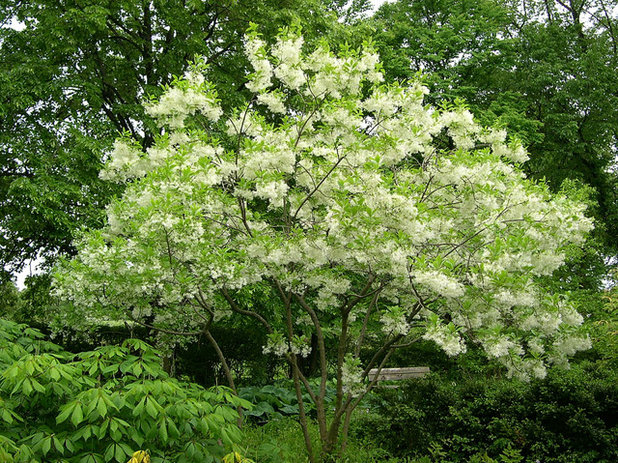 1. Fringetree
1. Fringetree(
Chionanthus spp.)
Fringe trees aren’t a household name, but they should be. The dainty, fringy flowers appear in early spring, just as the leaves unfurl. They’re quite shade-tolerant and are commonly planted as an understory specimen in a shade garden, where they really light up the space when in bloom. They will also tolerate full sun.
The Chinese fringetree (
C. retusus) is particularly deer-resistant, though the Eastern U.S. native white fringetree (
C. virginicus) is also a worthwhile choice where deer are an issue.
Where it will grow: Hardy to -20 degrees Fahrenheit (USDA zones 5 to 9; find your zone)
Light requirement: Shade-tolerant but will also tolerate full sun
Water requirement: High
Mature size: 15 to 20 feet tall and wide
See how to grow white fringetree
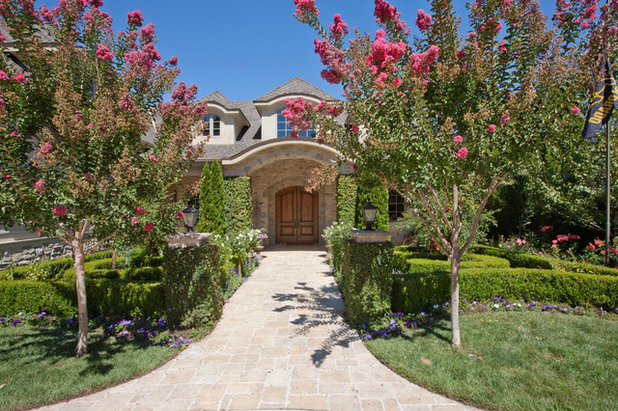
Creative Environments
2. Crape Myrtle
(
Lagerstroemia indica)
Crape myrtles are one of the most popular flowering trees in warm climates. They have smooth, exfoliating bark and their brightly colored, paper-textured flowers make a stunning midsummer display — few trees flower for as long as crape myrtles. These sun lovers are tough, easy to grow and quite unpalatable to deer.
Many varieties of crape myrtle are available with different flower colors and sizes. Shades of pink, purple and white are most common, and sizes range from 18-inch dwarves to 40-foot giants.
Where it will grow: Hardy to 0 degrees Fahrenheit (zones 7 to 9)
Light requirement: Full sun
Water requirement: Moderate
Mature size: Varies by species
See how to grow crape myrtle
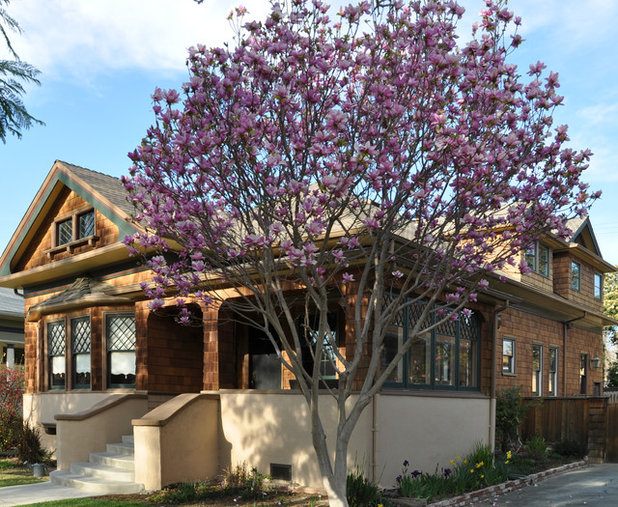
Acton Construction, Inc.
3. Saucer Magnolia
(
Magnolia x
soulangeana)
With their delicate pink blush and teacup size, the flowers of saucer magnolia are a real head-turner when they emerge on the tree’s bare, gray branches in late winter. Despite their delicate appearance, these flowers are fairly resistant to deer damage. Plant these small- to medium-sized trees in full sun in a fertile bed of topsoil to encourage good health and abundant flowering. Saucer magnolias grow slowly to 20 or 25 feet, though there are related magnolia varieties, such as
M. ‘Ann’, that stay under 10 feet tall when mature.
Most magnolias are quite deer-resistant, so you can also consider star magnolias (
M. stellata), with large, white, star-shaped flowers; southern magnolias (
M. grandiflora), with white, cup-shaped flowers on a large evergreen tree; and many others. Saucer magnolias are hardy in zones 5 to 9, but some magnolia varieties survive down to Zone 3.
Where it will grow: Hardy to -20 degrees Fahrenheit (zones 5 to 9)
Light requirement: Full sun
Water requirement: Moderate, but prefers moist, fertile soil
Mature size: 20 to 25 feet tall
See how to grow saucer magnolia
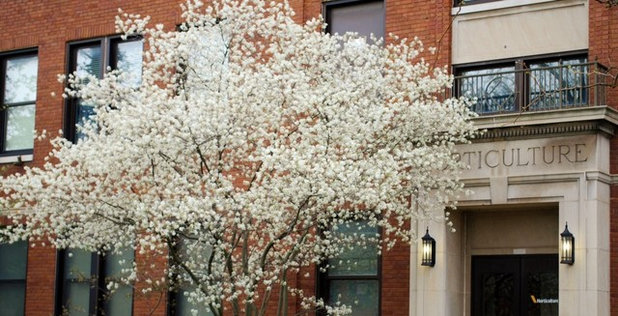
GardenArt
4. Serviceberry (
Amelanchier spp.)
Serviceberries are native throughout North America and are known for their delicious blueberry-like fruit, as well as the profusion of white flowers that appear when the trees break from dormancy in early spring. They tolerate partial shade to full sun.
There are numerous species of serviceberry, all of which show good deer resistance. They are a popular choice in cold climates; one species, commonly referred to as a Saskatoon (
A. alnifolia), is hardy all the way down to Zone 2. The same species can be suitable all the way up to Zone 10, making it one of the most widely adapted flowering trees. The cold- hardiness of other serviceberry species falls somewhere in between. Most varieties grow about 15 to 20 feet tall, though the downy serviceberry (
A. arborea) grows up to 40 feet.
Where it will grow: Hardy to -50 degrees Fahrenheit (zones 2 to 9), depending on species
Light requirement: Varies by species
Water requirement: Varies by species
Mature size: Varies by species
See how to grow serviceberry
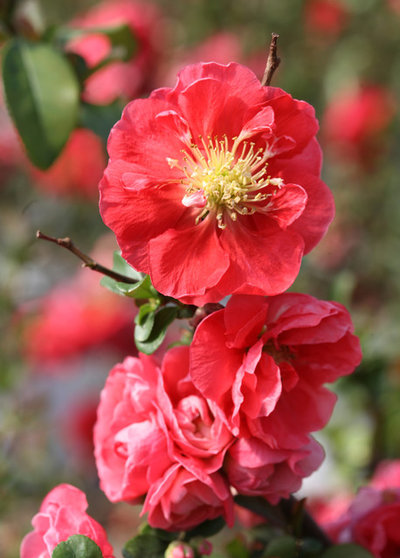
Monrovia
5. Flowering Quince (
Chaenomeles spp.)
This type of quince is known for its spring flower display, not for its fruit.The flowers are most often seen in shades of pink or red, but white cultivars are also available. Flowering quince is a true dwarf that rarely grows more than 6 feet tall and wide. The variety pictured here is called ‘Pink Storm’.
Where it will grow: Hardy to -20 degrees Fahrenheit (zones 5 to 9)
Light requirement: Full sun
Water requirement: Moderate to regular
Mature size: 6 feet tall and wide, depending on species
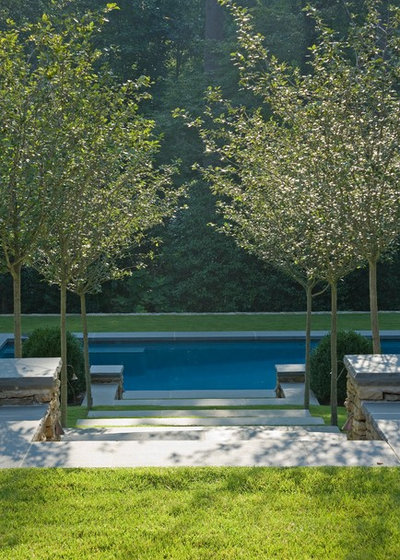
Golightly Landscape Architecture
6. Hawthorn (
Crataegus spp.)
There are many species of hawthorn available, and on the whole they are tough, adaptable trees, tolerating both wet and dry sites. The white flowers are often tinged with pink, like an apple blossom. They are, in fact, closely related to apple trees and produce a small crabapple-like fruit that is edible but usually very bitter.
Hawthorns vary in size, but most are in the range of 15 to 30 feet tall and wide. They are cold-hardy trees, with some species growing as far north as Zone 3. Other hawthorns tolerate warmer regions up to Zone 9. ‘Winter King’, the variety pictured here, is hardy in zones 4 to 7.
Where it will grow: Varies by species
Light requirement: Full sun
Water requirement: Moderate
Mature size: 15 to 30 feet tall and wide, depending on species
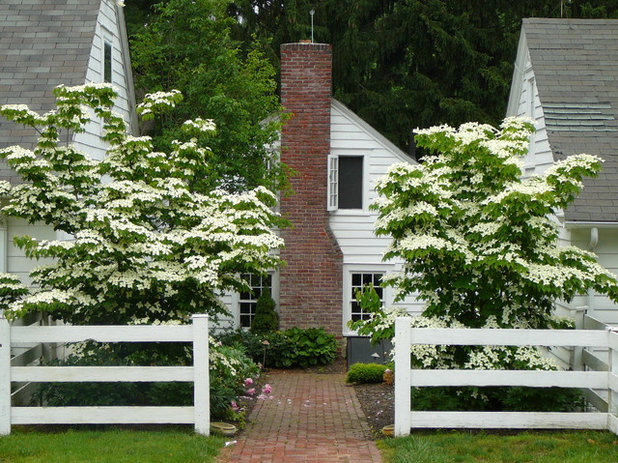
Wallace Landscape Associates
7. Chinese Dogwood (
Cornus kousa)
Chinese dogwood is absolutely covered in white flowers in spring. It is also known for its ornate shape and 1-inch red berries that ripen in summer (they’re edible but bland).
Where it will grow: Hardy to -20 degrees Fahrenheit (zones 5 to 8)
Light requirement: Full sun or part shade
Water requirement: Consistent moisture
Mature size: 20 feet tall and 15 feet wide
See how to grow Chinese dogwood
Do you have flowering trees that deer ignore? Tell us about them in the Comments.





